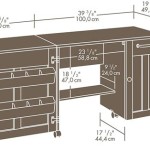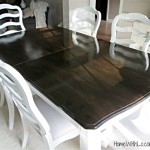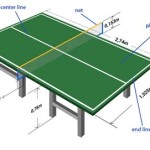Pressure Treated Wood for Raised Bed Vegetable Gardens: Considerations and Best Practices
Raised bed gardening offers numerous advantages for cultivating vegetables, including improved soil control, enhanced drainage, and reduced weed pressure. The construction of these raised beds often involves selecting appropriate materials for the frame. Pressure-treated lumber is a commonly considered option due to its resistance to decay and insect infestation. However, the use of pressure-treated wood in vegetable gardens raises important questions about potential chemical leaching and its impact on soil and plant health. This article examines the properties of pressure-treated wood, its suitability for raised bed construction, and best practices for mitigating potential risks.
Pressure-treated wood undergoes a process where chemical preservatives are forced deep into the wood fibers under high pressure. This process significantly extends the lifespan of the wood, protecting it from fungal decay, insect damage, and rot, factors that are particularly relevant in the moist environment of a garden bed. The effectiveness of pressure treatment makes it an attractive option for constructing structures that are in direct contact with the soil.
Historically, pressure-treated wood contained chromated copper arsenate (CCA). Concerns over arsenic leaching into soil led to its phase-out for residential uses in 2003. Modern pressure-treated wood primarily utilizes alkaline copper quaternary (ACQ), copper azole (CA), or micronized copper azole (MCA) as preservatives. These alternatives are generally considered safer than CCA. Understanding the specific type of treatment used is crucial for assessing potential risks and making informed decisions about its use in vegetable gardens.
Understanding the Chemical Composition of Pressure-Treated Wood
The primary purpose of pressure-treating wood is to impart resistance to decay and insect attack. This is achieved by impregnating the wood with chemical preservatives. Understanding these chemicals, their properties, and their potential for leaching is paramount when considering pressure-treated wood for vegetable gardens.
Alkaline Copper Quaternary (ACQ): ACQ is a water-based preservative consisting of copper and quaternary ammonium compounds. Copper acts as a fungicide, inhibiting the growth of decay-causing fungi, while the quaternary ammonium compounds provide insecticidal properties. ACQ is widely used as a replacement for CCA and is considered a less hazardous alternative. While ACQ is less likely to leach than CCA, some leaching of copper can still occur, particularly in acidic soils. The released copper, while essential for plant growth in small quantities, can become toxic at higher concentrations.
Copper Azole (CA): CA preservatives combine copper with azole compounds. The copper provides protection against fungal decay, and the azoles are broad-spectrum fungicides that further enhance the wood's resistance to rot. CA is another common alternative to CCA and is generally considered safe for residential use. Similar to ACQ, CA can leach small amounts of copper into the surrounding soil. The azole component is an organic fungicide, and its leaching potential and environmental impact are subjects of ongoing research.
Micronized Copper Azole (MCA): MCA represents a newer generation of wood preservatives. It involves injecting extremely small particles of copper azole into the wood. The micronization process allows for deeper penetration of the preservative into the wood cells, purportedly reducing the amount of copper needed and minimizing leaching. Although MCA is considered to have lower leaching potential compared to ACQ and CA, the long-term effects on soil and plant health are still being investigated.
It is recommended to always consult the lumber's end tag to determine the specific type of preservative used. This information is crucial for evaluating the potential risks associated with using the wood in a vegetable garden.
Potential Leaching and Mitigation Strategies
The primary concern associated with using pressure-treated wood in raised bed gardens is the potential for the leaching of chemical preservatives into the soil and subsequent uptake by plants. While modern preservatives are generally considered safer than their predecessors, the risk of leaching is not entirely eliminated. The extent of leaching depends on factors such as the type of preservative, soil pH, rainfall, and the age of the wood.
Acidic soils tend to promote the leaching of copper from pressure-treated wood. Copper binds more readily to soil particles in alkaline conditions, reducing its availability for plant uptake. Therefore, maintaining a slightly alkaline to neutral soil pH can help minimize the potential for copper contamination.
Several strategies can be employed to mitigate the risk of chemical leaching from pressure-treated wood in raised bed gardens. These strategies aim to create a barrier between the treated wood and the soil, minimizing direct contact and reducing the potential for chemical transfer.
Lining the Raised Bed: One effective method is to line the inside of the raised bed with a non-permeable barrier. Heavy-duty polyethylene plastic sheeting, pond liners, or landscape fabric can be used to prevent direct contact between the treated wood and the soil. It is important to ensure that the liner is durable and resistant to tearing or degradation. When using plastic liners, consider the potential for waterlogging if drainage holes are not incorporated.
Using a Physical Barrier: Another approach is to create a physical barrier between the treated wood and the soil using inert materials. For instance, a layer of gravel or crushed stone can be placed along the inside of the bed before adding soil. This layer acts as a buffer, preventing direct contact between the treated wood and the soil and allowing for improved drainage.
Selecting Appropriate Soil: Choose high-quality garden soil or create a custom soil mix that is rich in organic matter. Organic matter can bind to copper and other potential leachates, reducing their bioavailability to plants. Composting and amending the soil with organic materials can further enhance its buffering capacity.
Regular Soil Testing: Regularly test the soil in the raised bed to monitor copper levels and pH. Soil testing provides valuable information about the soil's chemical composition and can help identify potential issues before they become problematic. If copper levels are elevated, soil amendments like compost or lime can be used to help remediate the soil and reduce copper availability.
Plant Selection: While mitigation strategies can reduce the risk of chemical uptake, it is prudent to consider plant selection as well. Root vegetables, such as carrots and radishes, are more likely to absorb chemicals from the soil compared to leafy greens or fruiting vegetables. Growing these types of vegetables in raised beds constructed with pressure-treated wood may pose a slightly higher risk of chemical exposure.
Alternatives to Pressure-Treated Wood
While pressure-treated wood offers certain advantages in terms of durability and cost, several alternative materials can be used for constructing raised bed gardens. These alternatives offer varying degrees of durability, cost-effectiveness, and environmental impact.
Cedar: Cedar is a naturally rot-resistant wood that is a popular choice for raised bed construction. It contains natural oils that protect it from decay and insect damage. Cedar is generally considered a safe and environmentally friendly option for vegetable gardens. However, cedar is typically more expensive than pressure-treated wood, and its lifespan, while longer than untreated wood, is shorter than that of pressure-treated wood.
Black Locust: Black locust is another naturally durable wood that is resistant to rot and insects. It is a strong and long-lasting material that can be used for raised bed construction. Black locust is often sourced sustainably and is considered an environmentally responsible choice. However, it can be more difficult to find and is often more expensive than cedar.
Untreated Lumber with Protective Liners: Untreated lumber can be used for raised bed construction if properly protected. Liners, as previously discussed, can significantly extend the lifespan of untreated wood by preventing direct contact with the soil. This approach allows for the use of readily available and less expensive untreated lumber while minimizing the risk of chemical leaching. However, the lifespan of the bed will depend on the type of wood used and the effectiveness of the liner.
Composite Lumber: Composite lumber is made from recycled plastic and wood fibers. It is highly resistant to rot, insects, and water damage. Composite lumber is a durable and low-maintenance option for raised bed construction. However, it can be more expensive than pressure-treated wood, and its environmental impact depends on the source of the recycled materials and the manufacturing process.
Concrete Blocks or Bricks: Concrete blocks or bricks can be used to construct durable and long-lasting raised beds. These materials are readily available and relatively inexpensive. Concrete and brick are inert materials that do not leach chemicals into the soil. However, they can increase soil pH slightly and may require more effort to assemble compared to wooden frames.
Metal: Corrugated metal sheets or repurposed metal troughs can be used to create raised beds. Metal is durable and resistant to rot and insects. However, certain metals, such as galvanized steel, can leach zinc into the soil. Using coated or powder-coated metal can minimize this risk. Repurposed metal should be carefully evaluated to ensure it is free from lead paint or other potentially harmful coatings.
The selection of materials for raised bed construction depends on individual preferences, budget considerations, and environmental concerns. Weighing the pros and cons of each material is crucial for making an informed decision that aligns with gardening goals and values.

Build A Raised Garden Bed With Treated Wood Tague Lumber

Are Pressure Treated Woods Safe In Garden Beds Finegardening

Gardening Landscaping

Raised Bed Lumber Pressure Treated Safe Osu Extension Service

Raised Beds For Your Garden Framing Materials Finegardening

5 Amazing Raised Garden Beds Wood It S Real

How To Build A Rot Proof Garden Bed The Craftsman Blog

Treated Wood In The Landscape Home Garden Information Center

Raised Bed Garden Construction Part 3 Staining And Sealing The Impatient Gardener

How To Build A Raised Vegetable Garden Rogue Engineer








